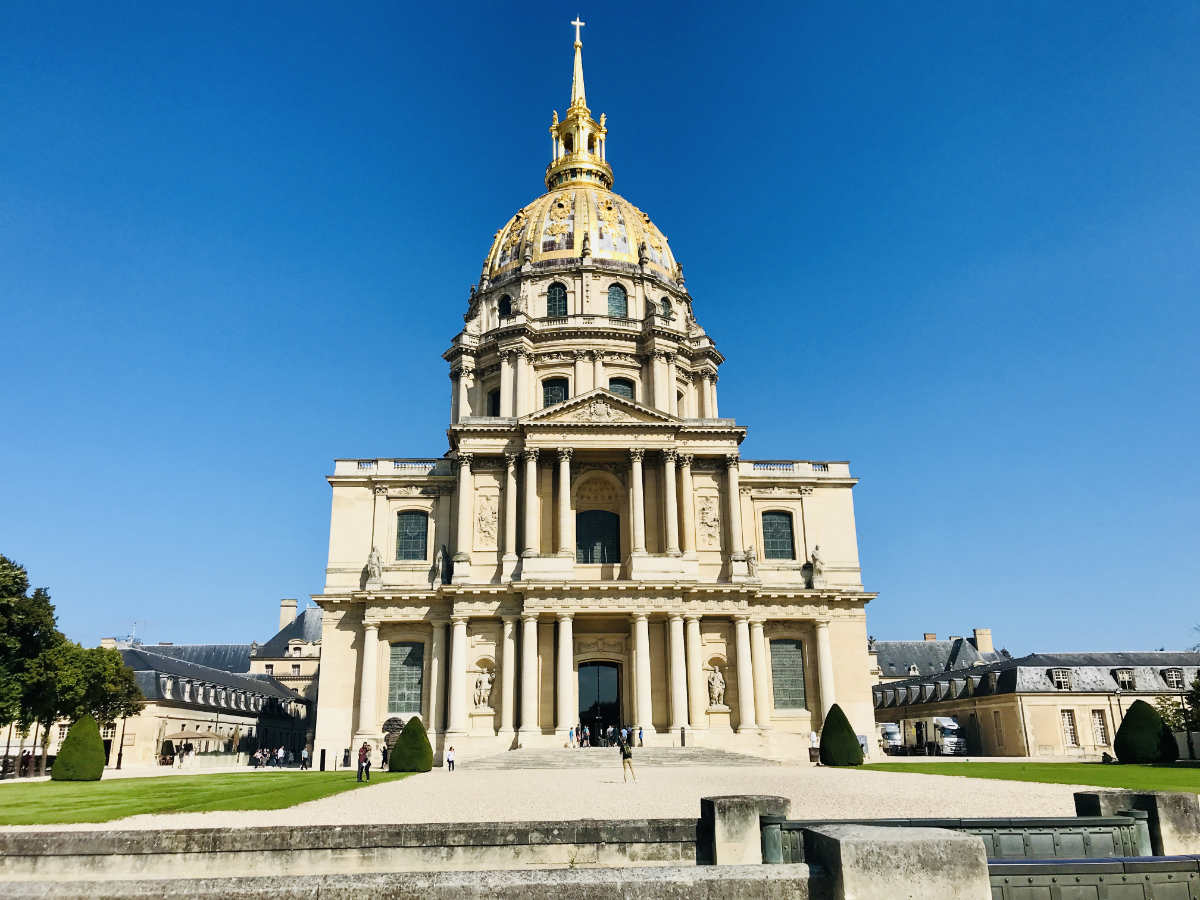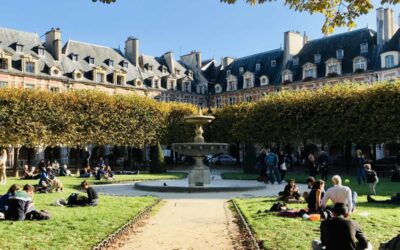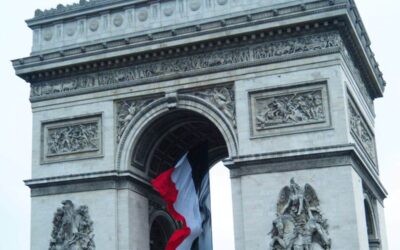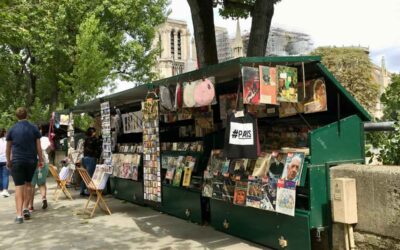Les Invalides in the 7th arrondissement of Paris is a large complex of buildings with a very interesting permanent resident: the French Emperor Napoleon Bonaparte. His body lies in an elaborate monument surrounded by reliefs of his accomplishments.
Officially known as the Hôtel National des Invalides, it also contains a museum called the Musée de l’Armée that is dedicated to the military history of France. But Les Invalides is more than the sum of its parts.
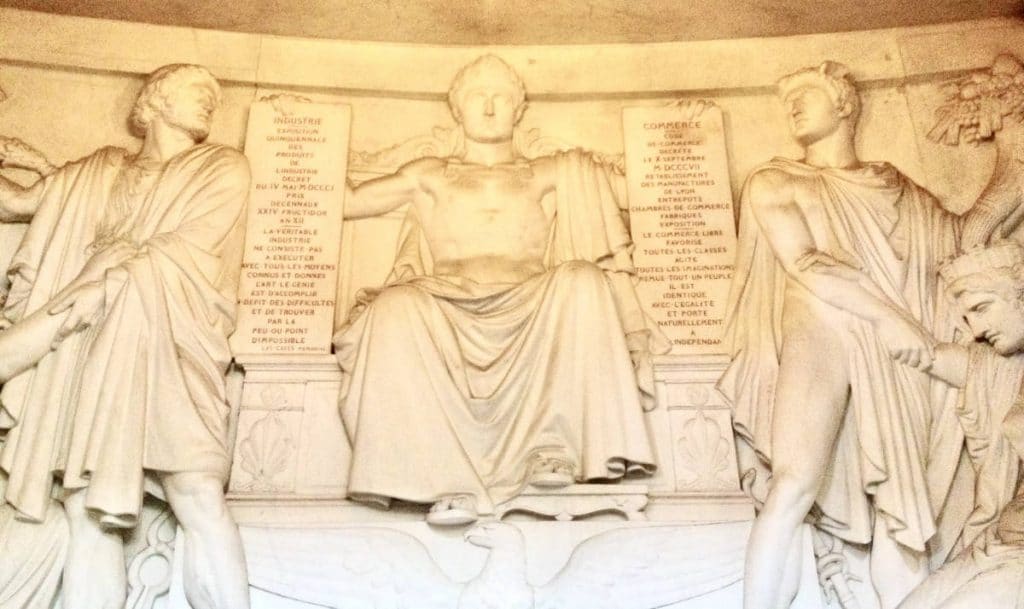
It is here that the largest state ceremonies take place, bestowing the full honor of the French République on those invitées entering its hallowed walls to receive military and civilian laurels.
It is considered a symbol of the nation and sacred to France’s military personnel, acknowledging personal sacrifices made for its citizens’ rights and freedoms in a tradition that continues to this day.
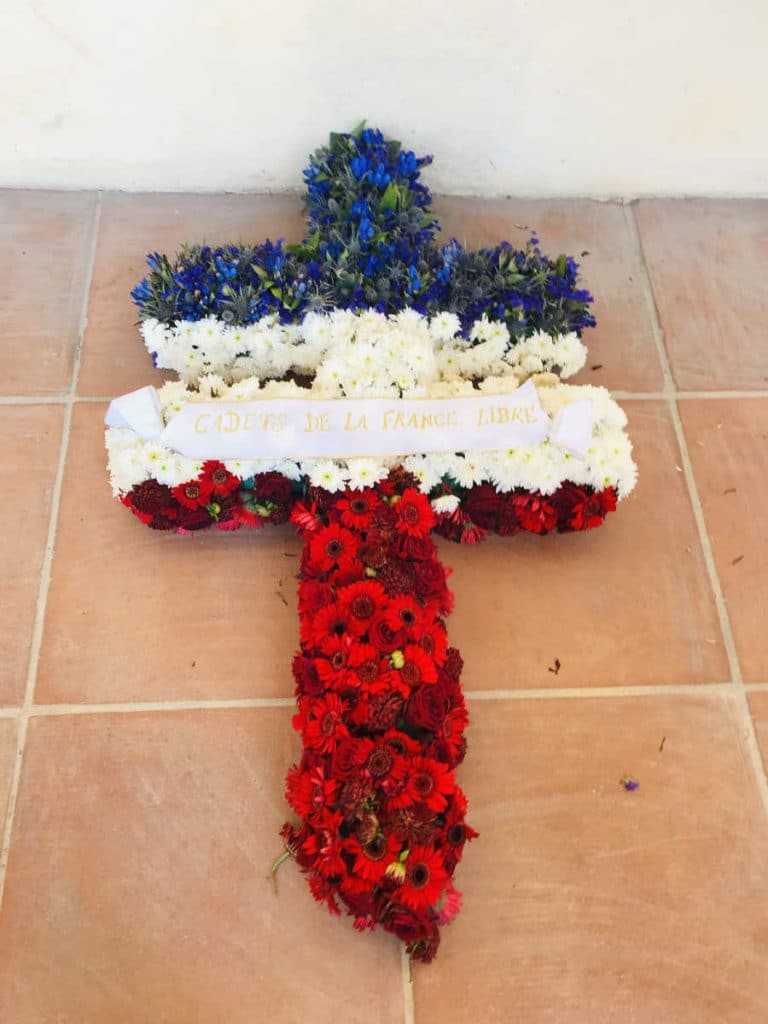
And that being said, if you are planning to visit Les Invalides, you may wish to check that there is not a special event going on at the time that you are heading over, as the Musée de l’Armée grounds are often closed for state and national ceremonies.
So with that, let’s see what there is to see in Les Invalides, shall we? Allons-y!
History and why it is called ‘Les Invalides’
The Hôtel des Invalides was commissioned in 1670 by the Sun King Louis XIV to provide accommodation and hospital care for wounded soldiers. Invalides, literally means for “invalids”.
As always, Louis wanted something big. He chose the plains of Grenelle, which at the time was outside the city of Paris. It was close to his capital but above all close to the Seine. This is important because at the time, everything was transported by the river.
By the time of the Napoleonic wars, over 5,000 soldiers of the French Army were recuperating there, at any given time.
On the premises of Les Invalides, you will still find a working hospital that continues to treat soldiers, officers, navy and air force personnel that have been injured on missions abroad on the behalf of France. There is also
- a retirement home
- a medical and surgical centre
- a centre for external medical consultations
Napoleon’s tomb buried under the Dome
The golden dome of Les Invalides covers the national cathedral of the French military, and the former Royal Chapel. It is the tallest church building in Paris at a height of 107 meters.
It was commissioned by Sun King Louis XIV (who also built the Palace of Versailles) and was to be a symbol of absolute monarchy in the 17th century. This significance is why during the French Revolution, it was stormed by rioters who seized the cannons and muskets stored in its cellars to use against the fort at Bastille later the same day.
Decades after Napoleon Bonaparte died in exile, he remained quite popular in France. During royal restoration, King Louis-Philippe decided to bring his body back from the island of Saint-Hélena to be buried in Paris according to his wishes.
“I wish my ashes to rest on the banks of the Seine among the people of France whom I so much loved“.
Napoleon Bonaparte’s last will and testament
It would be in 1861 that Napoleon was finally laid to rest in Les Invalides, when his nephew declared himself Emperor Napoleon III in a coup d’état. He decided that his uncle deserved the highest of honors as Emperor of France, and so decided to have him buried under the Dome of Les Invalides.
The sarcophagus was put up on a green granite pedestal and contains six coffins all nested within each other. One made of iron, another of mahogany, two others of lead, one of ebony and finally the last one of oak.
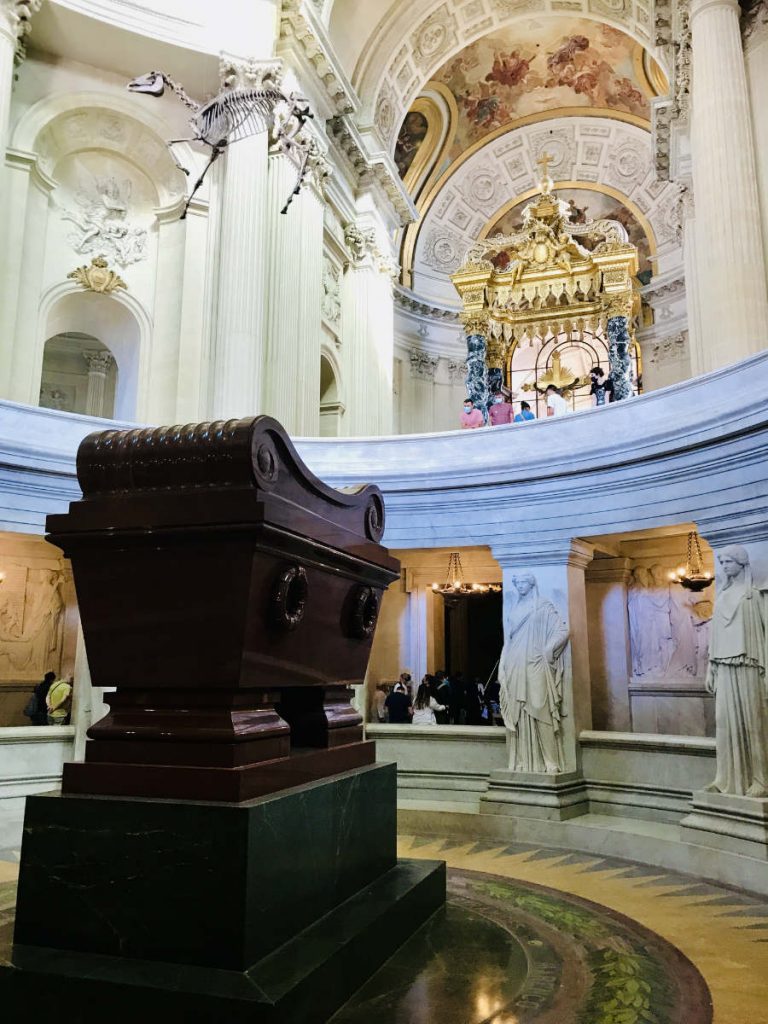
Records show that Napoleon was buried in his Colonel’s uniform (of the cavalry of the Guard) which bears his sash of the Légion d’Honneur. His famous hat, the sideways bicorne, rests on his legs.
Around the tomb, carved into the walls are the ten bas-reliefs sculpted by Pierre Charles Simart between 1846 and 1853, retracing the
achievements of the Consulate and the Empire. They include Napoleon often shirtless with him featuring:
- the code civil
- with a crown of sunshine (meant to evoke the Sun King)
- dressed as a Roman Julius Caesar
It certainly leaves no doubt of the stature Napoleon’s nephew accorded him.
State ceremonies at the Cours d’Honneur
There are no less than 17 courtyards inside the complex of Les Invalides, but the most important is the central one called Cours d’Honneur (meaning “courtyard of honor”).
It is here that state ceremonies are held such as a funeral for heros and heroines killed in combat or in the line of duty. Dignitaries like famous writers, philosophers, and sometimes even actors are bestowed with the honor of a state funeral.
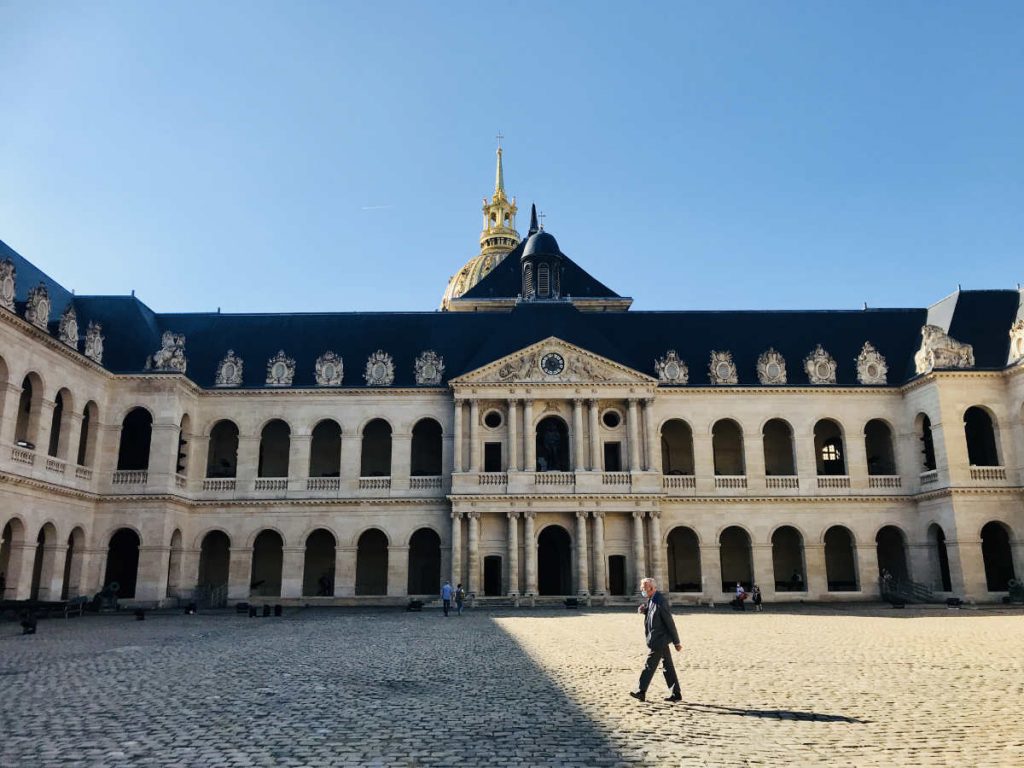
In 2019, a claimant to the French throne, Prince Jean-Christophe Napoleon Bonaparte, the great-great-great nephew of Napoleon Bonaparte, was allowed to get married here. He happened to be marrying Olympia, the great-granddaughter of Karl I of the Austrian Habsburgs.
Inside the Army museum
Around the Cour d’honneur are the main buildings of the Musée de l’Armée, with different wings containing different exhibits of different eras. French history has proven to be quite dramatic, so it is no surprise that the Musée de l’Armée’s collection spans from antiquity through the 20th century.
The military museum covers several floors on each side of the Cours d’honneur, with analysis and exhibits of earlier battles, the Napoleonic wars, and more recently the 20th century world wars.

There is everything from battle-worn swords and shields to ceremonial robes worn by Kings. There is also a preserved remains of Napoleon’s white horse who turned grey after all that fighting.
More contemporary exhibits show battle plans and what life in the army was like during WWI and WWII, along with an exhibit dedicated to Generals de Gaulle, Foch, Joffre, Leclerc, etc.
On Bastille day (14 juillet) , it is here at the Army museum that the soldiers and armament tanks are on display after the traditional march down the Champs Elysées during the national military parade.
Entrance to the museum is free all year round for former and current French military personnel.
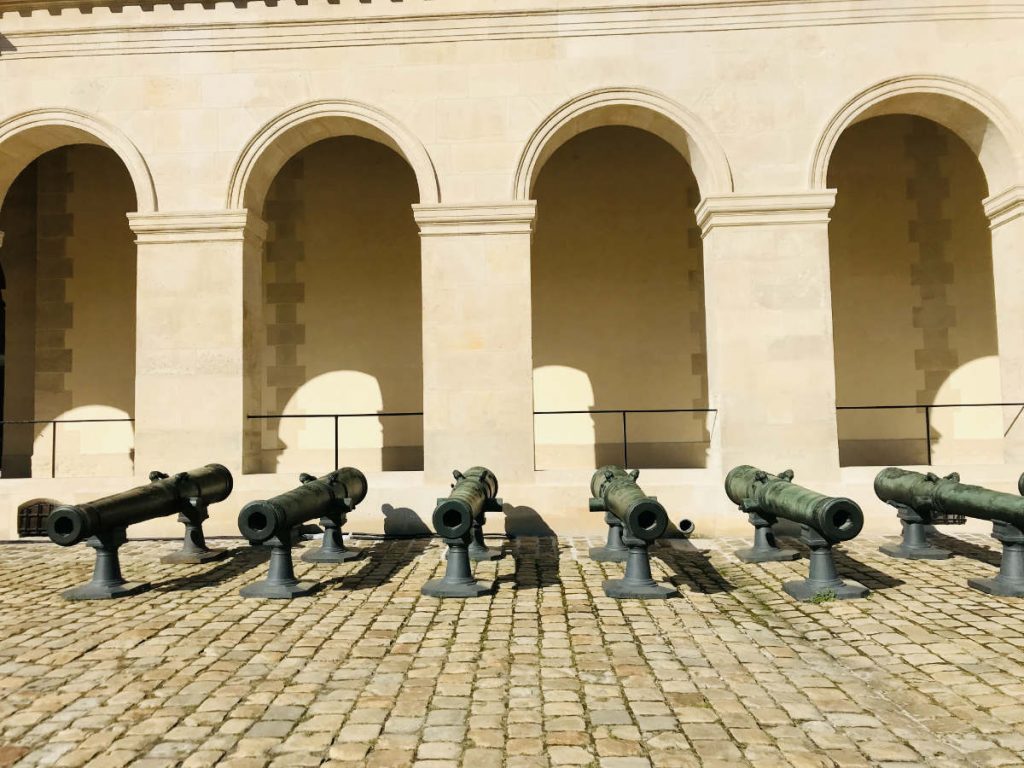
Is Les Invalides worth a visit?
Yes, the tomb of Napoleon is powerfully dramatic and well worth the visit. The other exhibits in the Musée de l’Armée that cover the various wars are also quite impressive, but there is a lot of reading, which may not be to the taste of young children.
When is the best time to go?
The Invalides and the Musée de l’Armée are rather large, with a lot of ground to cover, so I recommend going in the morning. It is often closed at short notice for special government occasions so check the agenda in the morning before you head over.
Where to get tickets?
The Invalides is one of the most popular tourist attractions in Paris, so lines outside tend to be long in the summer. You can get can book your skip-the-line tickets with tour guide here.

If you enjoyed that article, you may enjoy reading more about top things to do in Paris. A bientôt!
